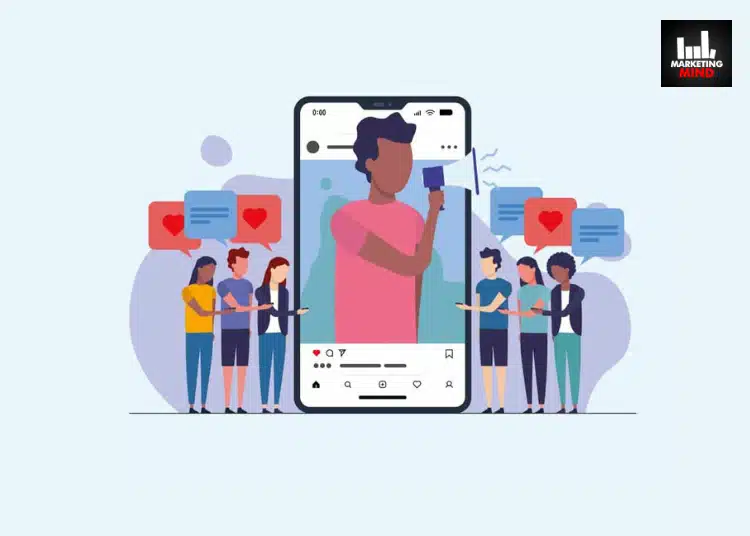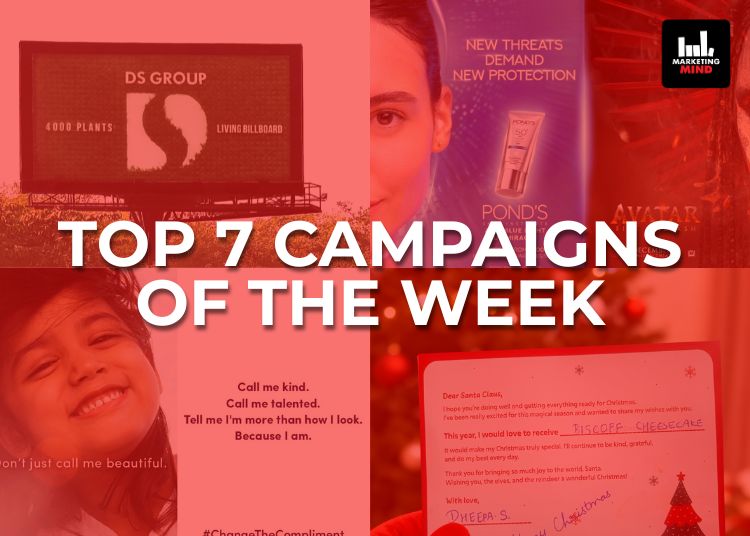In our digitally-driven world, influencers have wielded profound influence across a spectrum of interests, spanning from makeup to marketing, and from politics to products. This rise of influencer marketing is significantly shaping both the strategies of marketers and the perceptions of consumers.
In recent years, influencer marketing has emerged as a burgeoning industry in India, poised for exponential growth. Increasingly, brands are embracing influencer collaborations as a cornerstone of their strategic brand initiatives.
Amid all these facts, the saying “With great power comes great responsibility” holds true in influencer marketing, where trust is crucial for influencers to build their content and attract loyal followers. Furthermore, brands must remain mindful of potential challenges and pitfalls that may accompany such partnerships.
In the current landscape of rapid growth in influencer marketing, iCubesWire recently conducted a survey aimed at understanding the impact of influencer content on consumer behaviour and perceptions.
With 1000 people as participants, the survey revealed that about 53% of consumers do not trust influencer content at all, hinting at the growing scepticism towards influencers and their recommendations. Also, 37% of participants believe influencer recommendations are never genuine.
Moreover, according to KlugKlug, an influencer marketing platform, nearly two out of three (58.5%) Instagram profiles in India are found to have over 60% fake or spurious followers. This trend is especially prevalent in the beauty and fashion industry.
It comes at a time when influencer marketing budgets constitute the major share of total marketing expenditures for numerous brands, marking a pivotal moment in the marketing landscape. These observations leave us pondering whether trust in influencer marketing in India reached a plateau and is the influencing power of influencers diminishing gradually?
Are influencers’ trust levels dwindling among consumers?

Sahil Chopra, Founder and CEO, iCubesWire, said, “Influencers are not losing their power to influence consumers. We all are looking at the 53% data point and not looking at the remaining lot and how it is positively impacting. But yes, there is a need to look at the entire ecosystem and understand what the consumer feels.”

Hamsini Shivakumar, Brand Consultant, Semiotician, Founder – Leapfrog Strategy Consulting, said that Influencer marketing is a social phenomenon enabled by technology. It’s just a new, enhanced and larger scale version of w-o-m (word of mouth) where people trust the advice of friends, family and people like them.
Similarly, Arushi Gupta, Head– influencer.in, the influencer marketing arm of Social Beat, underscored that influencers aren’t losing their power to influence, on the contrary the industry is evolving.

“Today’s consumers want realness and honesty, so the influencers who really connect and keep it authentic will continue to thrive and influence consumer decisions. At our agency, we have teamed up with over 1,50,000+ creators, making sure every partnership stays true to these values. It’s all about building trust and relationships that matter,” she added.
Echoing similar sentiments, Samit Sinha, Founder, Managing Partner, Alchemist Brand Consulting, said, “While some influencers are certainly losing their influence, I don’t have any reason to believe that this is true overall. We need curators as we often feel that we don’t have enough to judge or make informed decisions.”

Earlier people’s trust in the institutions of press and media was near absolute, and their influence on people was enormous. In the era of fake news and sensationalism both their credibility and influence has declined, and that is what has given rise to the individual social media influencers whose popularity in general seems only to be going up, he added.

Vaibhav Gupta, Co-Founder and CPO, KlugKlug, said that while a recent survey indicates that 53% of respondents do not trust influencer content, this does not necessarily mean that influencers are losing their power to influence consumers.
“Influencers still hold significant sway, particularly among younger demographics and niche communities. The key lies in the authenticity and transparency of the content. Influencers who provide genuine, valuable, and engaging content continue to thrive and maintain strong connections with their followers,” he said.
Moreover, as consumers become more discerning, they are more likely to trust influencers who consistently demonstrate honesty and integrity in their recommendations. Therefore, while there is a noticeable level of distrust, influencers who adapt and prioritize authenticity can still wield considerable influence over consumer behaviour, he added.

Pravin Shiriyannavar, COO, brand-comm, A unit of Madison World, asserted that he doesn’t agree that influencers are losing their power to influence consumers. It might be in some odd cases. The market has two types of target groups who are part of the communication exercise. The first one is considering buying or availing a product or a service, but is exploring which brand to choose and when to buy.
The second one fits the customer profile or persona but is not considering or does not feel the need to explore brands currently. The second type of customers are targeted – they are the ones who show a greater degree of distrust.
Key factors behind the lack of trust in influencer content among some groups
Shivakumar said, “Now that Influencer numbers have grown so large and they are being sponsored by brands, their trustability and credibility are flattening.”
Shiriyannavar said, “Technology can either be a boon or a bane, case in point in digital technology being that fact that it has the ability to identify the customer and through programmatic advertising and retargeting. It is pushing content to the target customer repeatedly, which many times results in over-exposing the customer to the content that he or she is not considering. These types of respondents indicate distrust.”
According to Chopra, the largest challenge is relevance and trust.
“We need to have content which is relevant to the end user, and we need to have trust with what is being posted. A lot of influencers promote content and brands which are hard to relate with,” he added.
Meanwhile, Vaibhav highlighted that several factors contribute to the distrust in influencer content including over commercialisation, lack of authenticity and transparency issues and to address these issues, influencers can increase transparency, focus on authenticity and diversify content.
According to Sinha, the main factor behind some influencers losing trust is that their opinions are beginning to be perceived as suspect and tainted by personal and commercial agendas, and not objective. If these perceptions are not addressed by the influencers, it will definitely make their influence shrink over time.
Meanwhile, Gupta pointed out that one of the main reasons people don’t trust influencers is when they promote products that they themselves wouldn’t use. To maintain that trust, influencers need to keep it real.
“They must only back products they really believe in and give honest reviews. Being upfront about who they are working with and staying true to their own style can help them connect better with their followers,” she added.
Is influencer fatigue reducing their credibility?
Sinha said, “I don’t think it is a case of influencer fatigue as much as lack of influencer credibility.”
Striking a similar tone, Chopra said, “There is no fatigue as far as I see. The real challenge is what the consumer aspires to see is largely off. We need to build content which is relevant and also, we need to differentiate between content and ad as far as influencer content goes.”
On the contrary, Gupta highlighted that influencer fatigue is a big thing these days.
“You start seeing lower engagement and people questioning every sponsored post. To tackle this, influencers and brands need to mix things up. Tell stories that matter, not just push products. Talk to your audience like they are real people, not just numbers. Being real and creative is what keeps people engaged. So, whenever we plan our campaigns at the agency, we are always brainstorming ways to connect authentically and make sure every piece of content feels fresh and engaging,” she said.
Similarly, Vaibhav believes that influencer fatigue is a significant reason behind the growing distrust in influencer content.
“Signs of this fatigue include decreased engagement rates, such as lower likes, comments, and shares on posts, and an increasing trend of followers unfollowing influencers who excessively post sponsored content. To mitigate influencer fatigue, influencers and brands need to create diverse and valuable content that goes beyond mere product promotions. They should focus on storytelling, providing educational or entertaining content, and engaging authentically with their audience. By balancing sponsored posts with organic content and fostering genuine interactions, influencers can maintain the interest and trust of their followers,” he said.
Shivakumar stated that this needs to be understood in a segmented way. Credibility and trust levels on Influencers will vary a lot by type of category.
Shiriyannavar stated that if a majority of the respondents, who need a product but exhibit a high degree of distress, it is a warning sign, and in such cases, the advertisers should reconsider their options.
The impact of influencer trustworthiness on brand spending
Shiriyannavar mentioned that influencers can protect their brand value in the long run to sustain their influence and credibility by following a few guidelines.
“First of all, their content cannot overtly sound promotional or salesy. Secondly, the content can be embedded to showcase the essence and need for a product or a service. Thirdly, the product content can be in a review format which showcases its functionality and usage. In these scenarios, the target audience would feel empowered because the content is informative in nature and not pushing a person to buy,” he said.
Gupta believes that despite the trust issues, brands probably won’t cut back on influencer marketing any time soon.
“It’s still a growing industry, set to hit Rs 34 billion by 2026. We’ve seen tons of brands score big by partnering with influencers. At our agency, we have teamed up with over 200 top brands, learning first hand what works and what doesn’t in this dynamic space. Moving forward, though, brands might get pickier, teaming up with influencers who really connect with their audience, but they certainly won’t decrease their spending,” she added.
On the other hand, Sinha pointed out that the day influencers see a decline in their following, brands will reduce their spending on them.
Vaibhav emphasised that if the trend of distrust continues, it is likely that brands will re-evaluate their spending on influencer marketing.
“However, rather than a significant decrease in overall spending, brands may shift their focus to working with influencers who have smaller but highly engaged audiences or those known for their authenticity and transparency. Additionally, brands might invest more in long-term partnerships that build deeper connections with influencers and their followers, ensuring more genuine endorsements and collaborations,” he added.
Meanwhile, Chopra said, “The industry forecasts are massive, and it’ll keep on growing. Relevant content has to be created and has to be published for the relevant audiences.”
Shivakumar believes that political influencers are likely to have polarised trust levels. Finfluencers may also have a similarly polarised following.
Major challenges facing the influencer marketing sector in India
According to Vaibhav, the influencer marketing sector in India faces several significant challenges. Regulatory scrutiny is increasing, with more stringent guidelines around sponsored content and advertising disclosures.
Furthermore, he went on to say that the market is also highly saturated, making it difficult for new voices to stand out and gain traction. Maintaining content authenticity is another major challenge, as the highly commercialized environment can lead to scepticism among followers. Additionally, effectively measuring the return on investment and the true impact of influencer campaigns remains a complex issue for brands and marketers.
On the other hand, Shiriyannavar emphasised, “Thankfully, the number of influences and their hold on their followers is increasing, which offers more choices to the advertisers to explore. Unlike the celebrities of the past, I don’t see any challenge working with influencers currently.”
Chopra reiterated that the biggest challenge is the fact that the content we are posted needs to be relevant and needs to have trust.
Sinha highlighted that the biggest challenge in the market today is that just about everybody with an internet connection thinks of themselves as an influencer, many of whom lack the basic knowledge or the skills to be able to have an informed opinion on any subject.
“Eventually, natural selection will kick-in and only the fittest will survive. That’s evolution,” he added.
Gupta said that with the impressive growth of influencer marketing in India, creators, brands and agencies are trying to stand out. Creators who continue to be true to their identity are the ones that create impact via brand partnerships. Also, with the regulations and compliances in place, it becomes difficult for a lot of agencies to adapt to that.
“However, at our agency, we have embraced these challenges as opportunities to innovate. Despite the challenges, we have consistently delivered numerous campaigns that resonate with the audience and meet the regulatory standards,” she added.
Strategies for influencers to protect brand value over time
“Influencers can only protect their turf by ensuring that their opinions can be valued because of their sincerity and authenticity, and they do not resort to sensationalism,” Sinha stated.
Shivakumar said, “Beauty, fashion and lifestyle influencers may be least impacted by credibility issues. Because even if they are paid promoters, so long as the affiliation is declared and followers know it, it wouldn’t impact their trust scores.”
Gupta believes that to safeguard their brand, influencers should stay true to themselves and maintain a clear and unique identity.
“It’s all about building real connections with your followers, sticking to what you believe in, and keeping your content fresh and interesting. Evolving alongside your audience ensures you stay connected and relevant,” she said.
Vaibhav stated that in order to sustain their influence and credibility in the long run, influencers should prioritise maintaining authenticity and transparency in their content.
He added, “Diversifying income streams can also help reduce the reliance on sponsored posts, allowing influencers to remain genuine and selective about the brands they endorse. Building a personal brand that reflects their true personality and values, and consistently engaging with their audience through comments, Q&A sessions, and direct messages, can foster a loyal and engaged community. By focusing on these aspects, influencers can protect their brand value and ensure long-term sustainability.”
The future landscape of influencer marketing in India
Gupta said that the influencer marketing landscape will likely see a shift towards more niche and micro-influencers, as they often have more engaged and loyal audiences.
Furthermore, she went on to say that people are also loving user-generated content (UGC) as it ensures community involvement and provides authentic endorsements that resonate more deeply with consumers.
“Other emerging trends include long term partnerships, emphasis on diversity and representation, and the integration of AI and AR technologies to create more interactive experiences,” she added.
Similarly, Vaibhav underscored that the influencer marketing landscape is expected to evolve significantly over the next few years. One emerging trend is the rise of micro and nano-influencers, who, despite having smaller followings, boast highly engaged audiences. Brands are likely to prioritise these influencers for their ability to connect more authentically with followers.
“Another trend is the focus on long-term partnerships, where brands and influencers work together on ongoing collaborations rather than one-off campaigns. The integration of AI and advanced analytics will also become more prevalent, enabling better measurement of influencer impact and audience engagement. Additionally, new social media platforms and content formats, such as short-form videos and live streaming, are likely to gain popularity, reshaping the way influencer marketing is executed,” he added.
Shiriyannavar said, “In my opinion, evolution would be in creativity, production technology and clarity of communication. I also feel that the creators’ content become a lot more mature in the near future.”
He added that the sponsor of the content should only give guidelines to the creator and should not influence the creativity or the presentation style of the creator. If sponsors are influencing the influencers, they are, in fact, looking at short-term gains and hence, they could be responsible for the product communication not being very effective.
Chopra stated that in the coming years vernacular will see a major shift. Also, the brands will be spending a lot more on micro and nano influencers who have niche followers and have sticky audiences. Celebrities and macro will be eventually seen as a big media push only.
Sinha emphasised, “I see the market being dominated by a few huge influencers in the future. At the other end we will see an exponential growth in the number of micro-influencers. The ones that are likely to face the threat of extinction are the ones in the middle.”
He believes that the current state of influencer marketing in India is still somewhat in its infancy today, but it will grow, evolve and mature with time.
Similarly, Shivakumar said, “In my view influencer marketing is here to stay because there are many forces that are stakeholders in its continuity. First of all the platforms – YouTube and Instagram. Then the Influencers themselves – it’s a livelihood and popularity issue for them. Brands need them and most of all, so do audiences.”
According to Gupta, influencer marketing in India is at an exciting juncture, with immense potential for growth. The focus on regional influencers and vernacular content is increasing, making campaigns more relatable and effective. Additionally, brands are investing more in long-term collaborations, which can foster deeper connections and trust with the audience.
“We are also seeing creators on platforms like Snapchat and Linkedin starting to scale – providing newer platforms of growth,” she added.
















